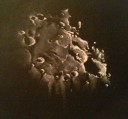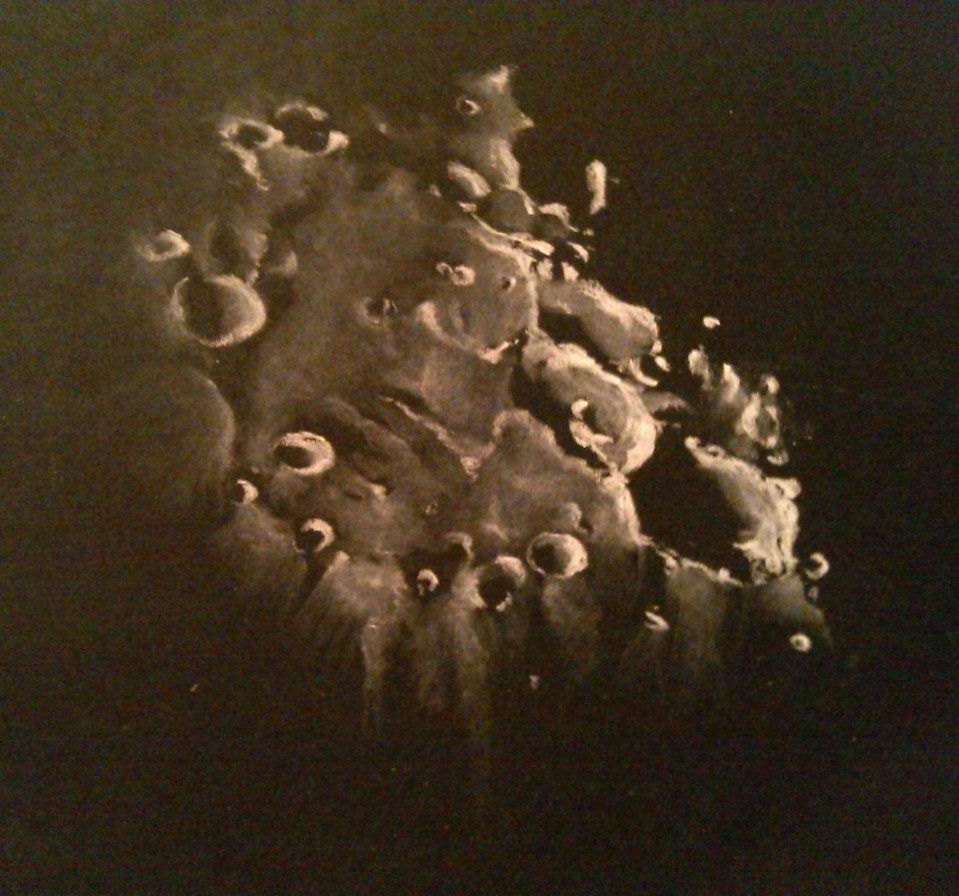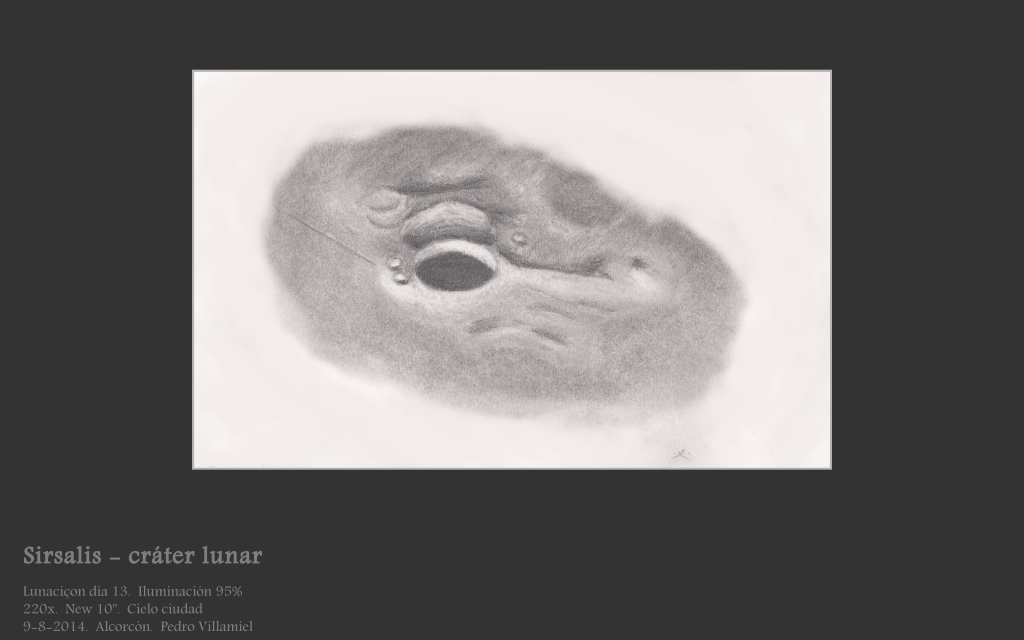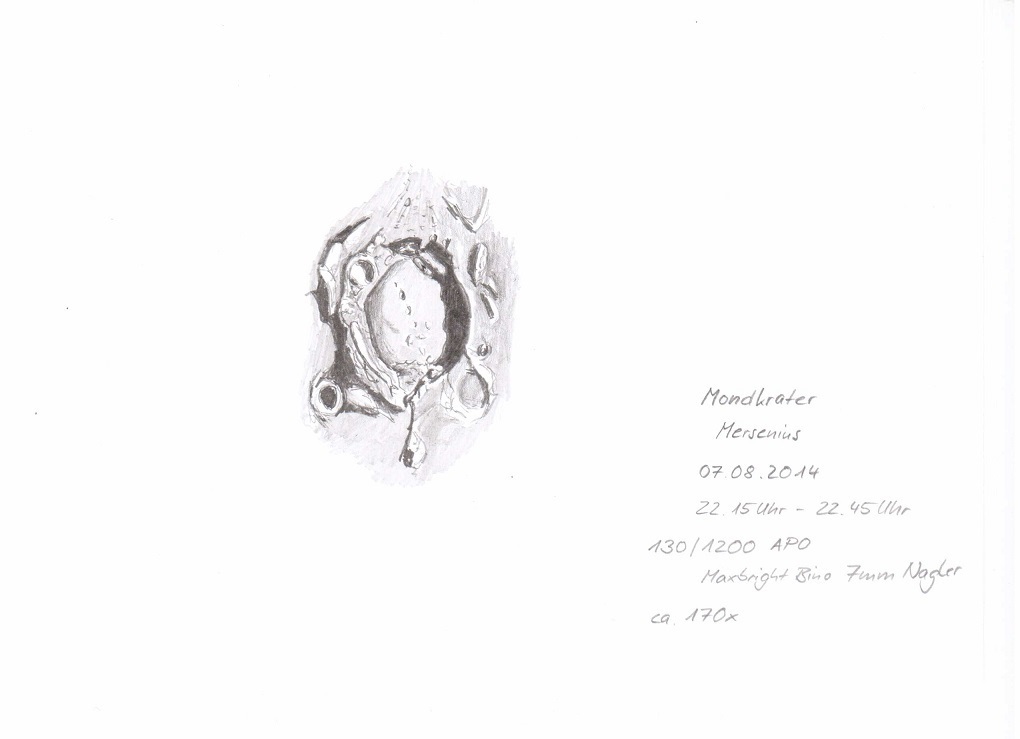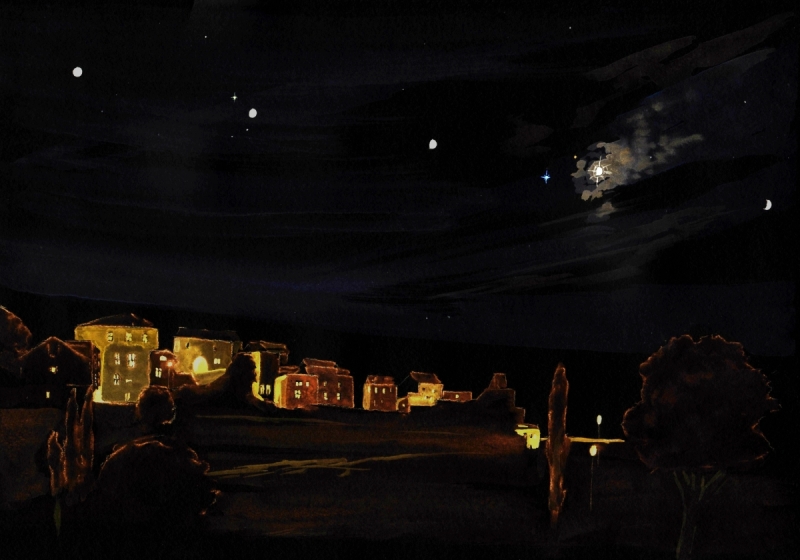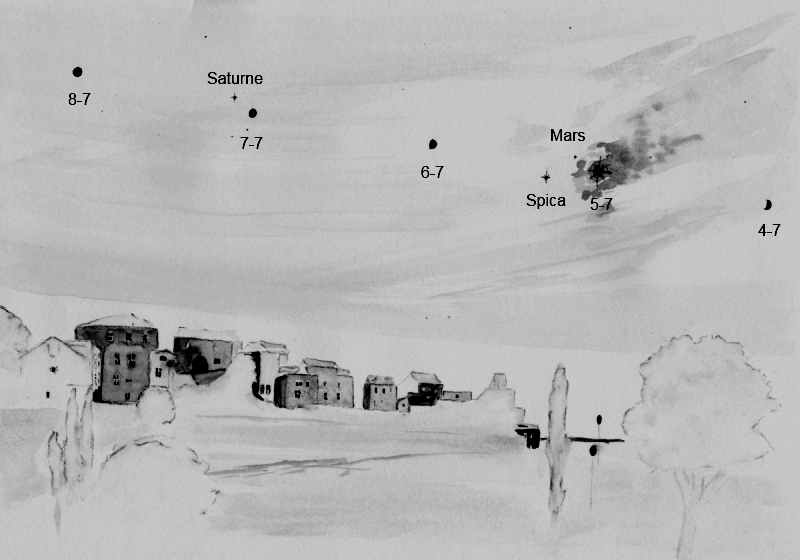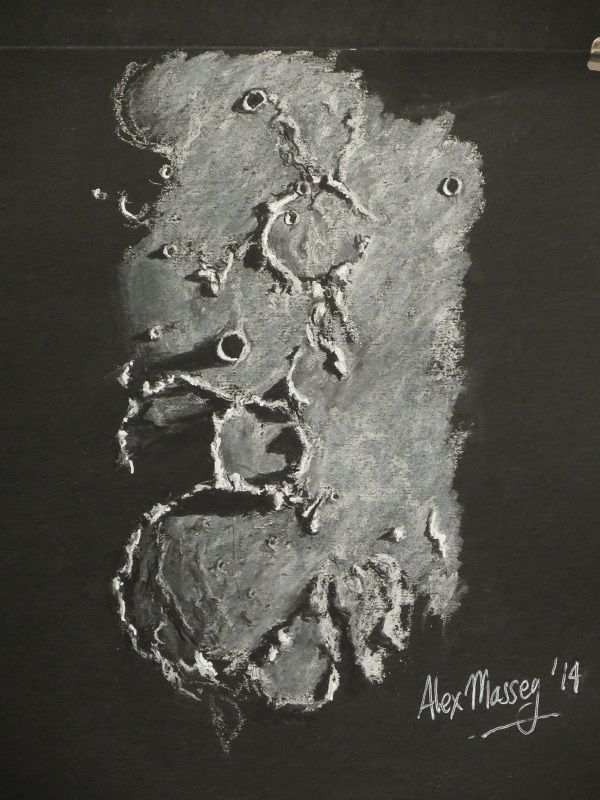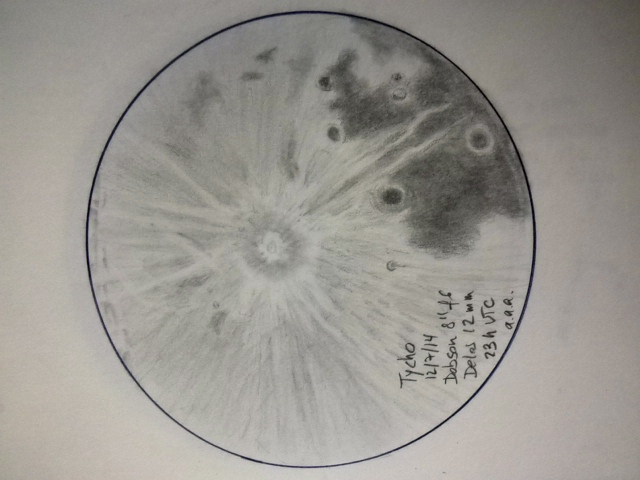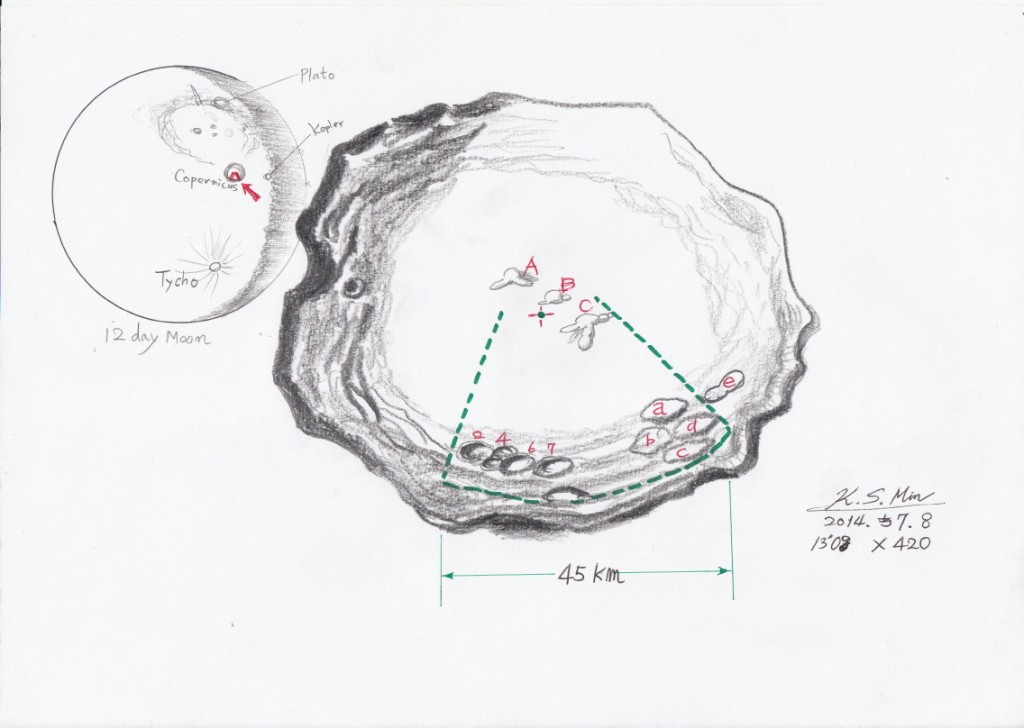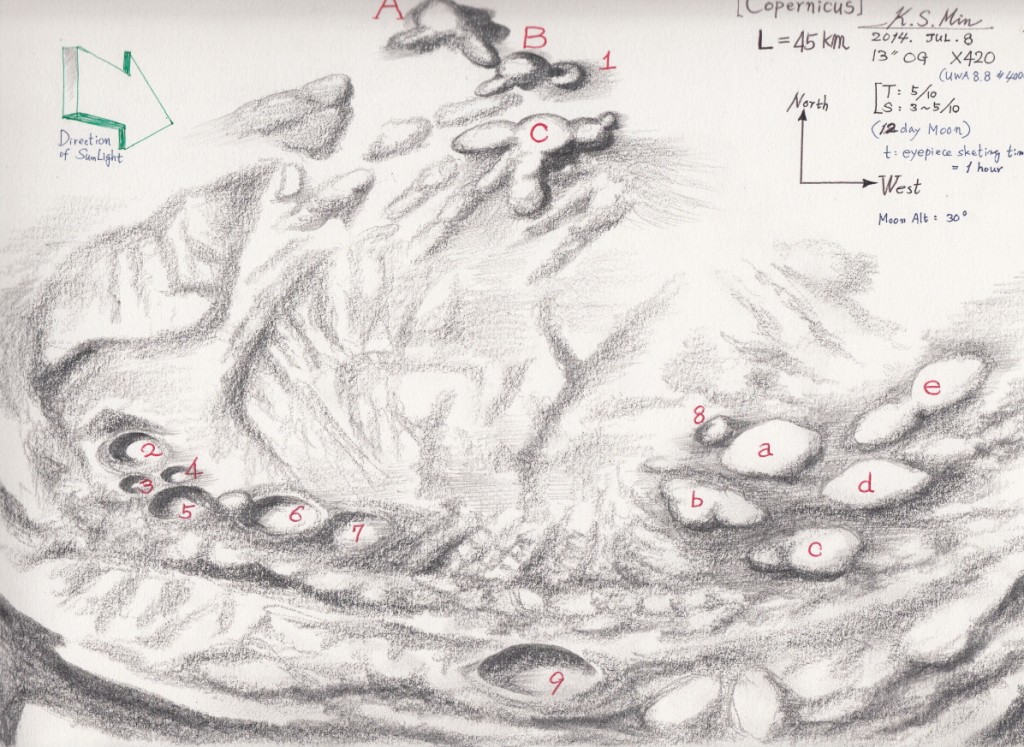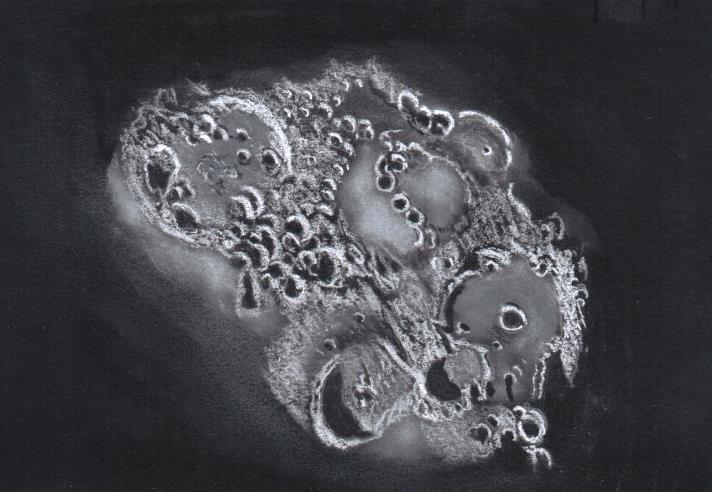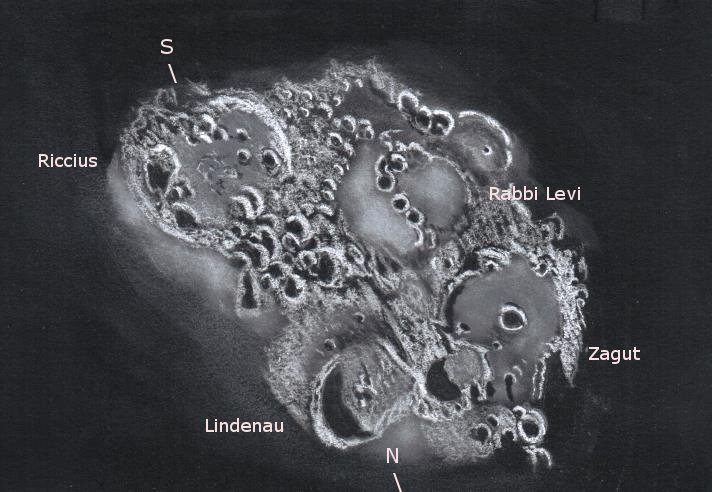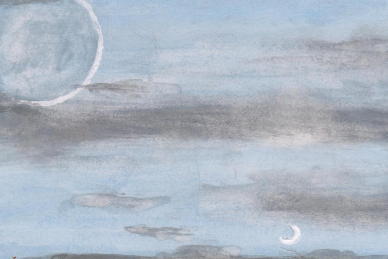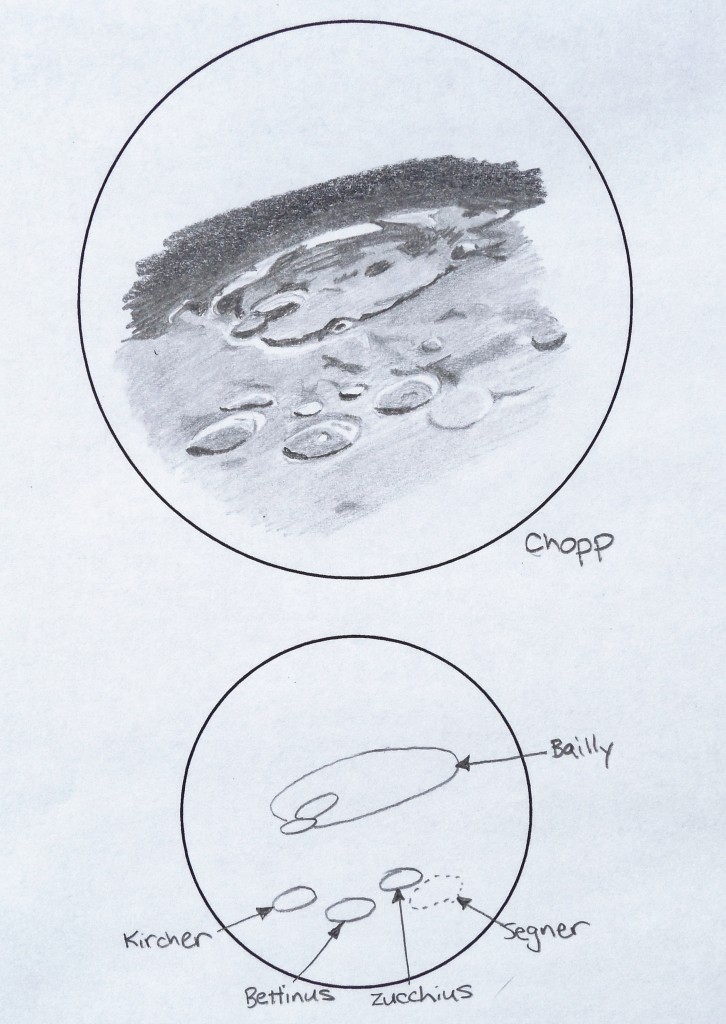
Hi,
Please accept my submission of Baily crater and surrounding region. The weather was very nice that night; warm and dry and the seeing was excellent. The Moon’s liberation was favorable to bring Bailly just past the terminator. I made this sketch using my 10” Discovery Dobsonian telescope at a magnification of 170x with neutral filter.
Object Name: Bailly crater and region.
Object Type: Lunar Crater
Location: My backyard in Green Bay, WI, USA
Date: 8/9/2014 2:00 UTC
Media: mechanical graphite pencils (2H, HB, 2B, 4B), white paper and blending stumps
Thank you,
Brian Chopp

